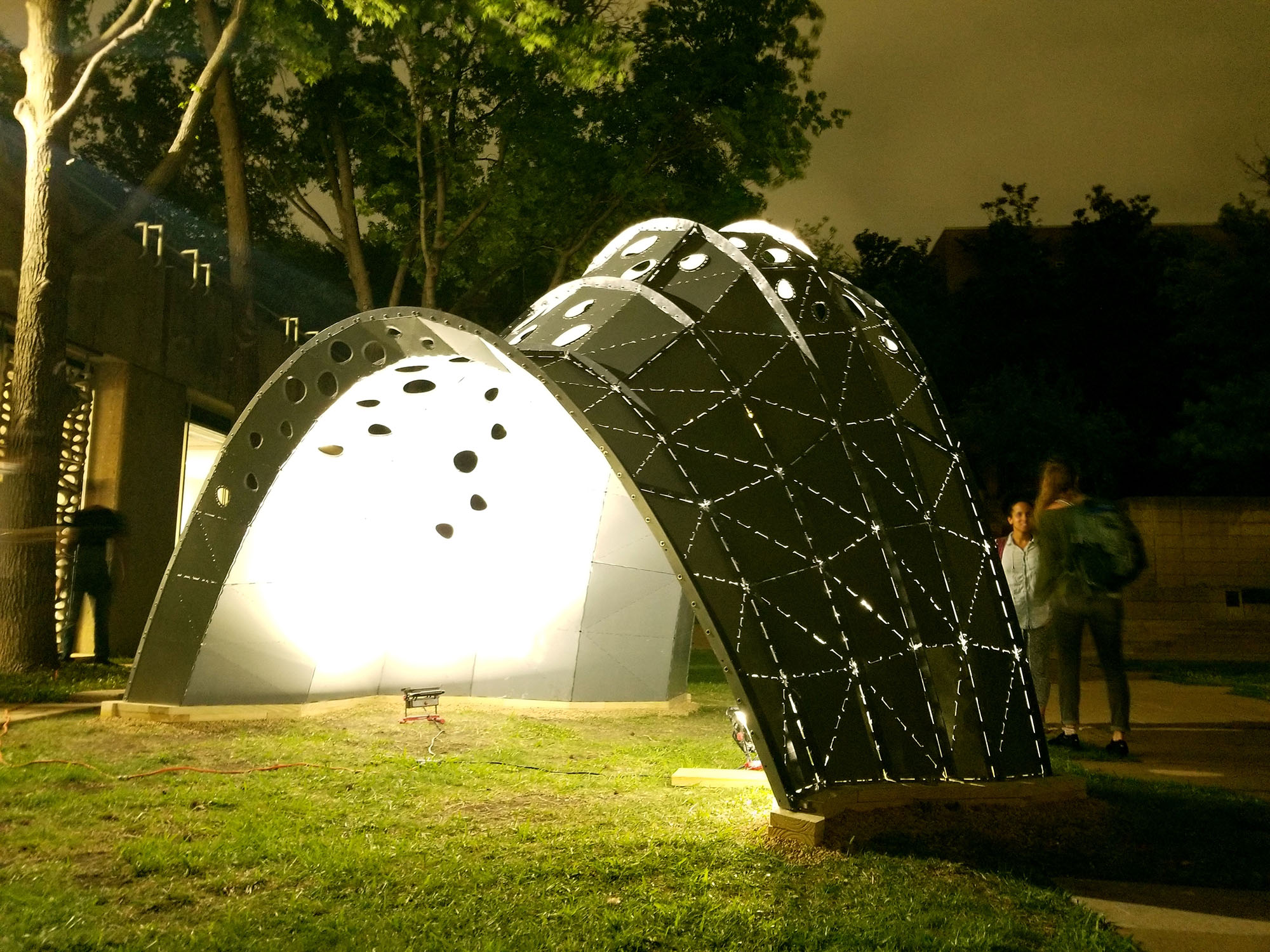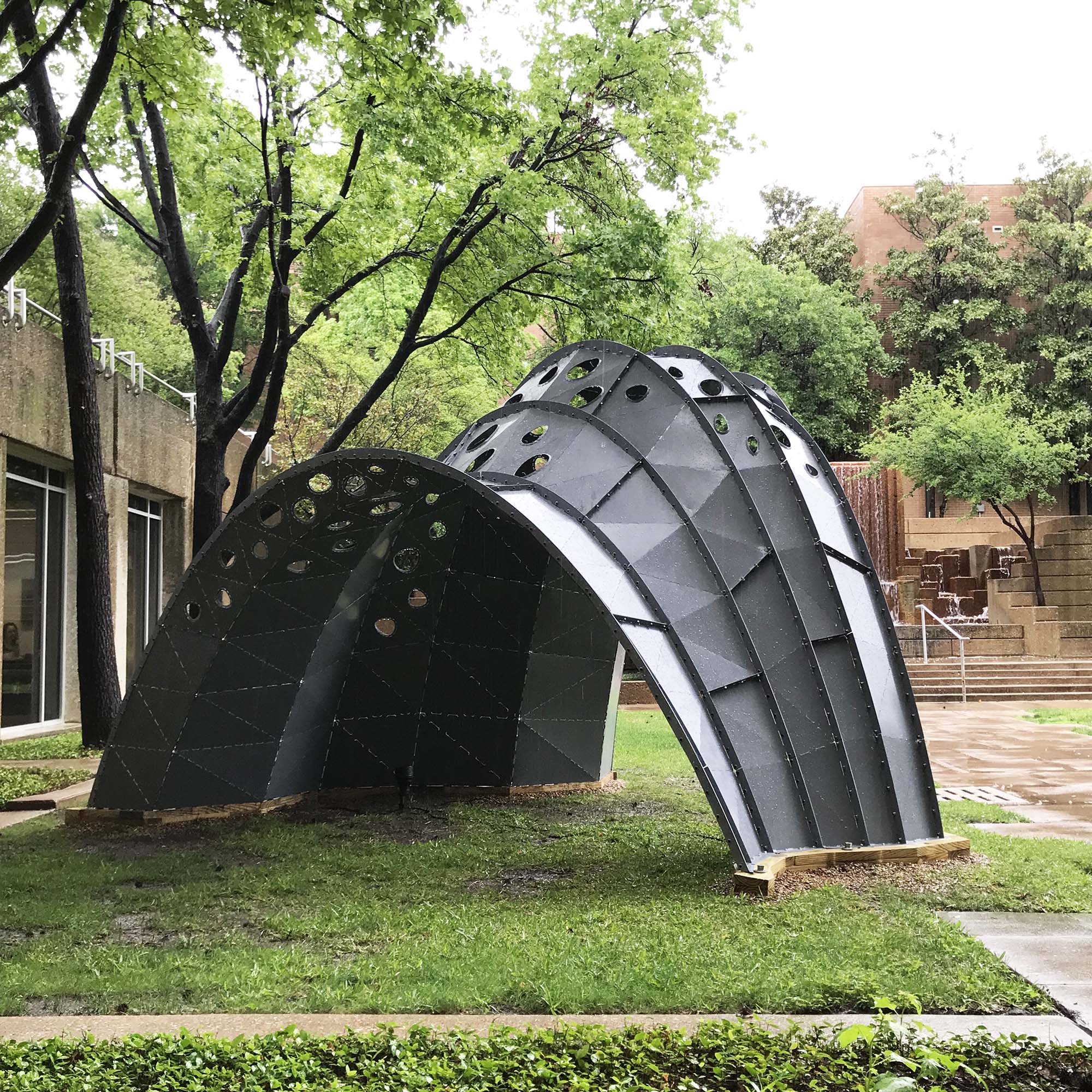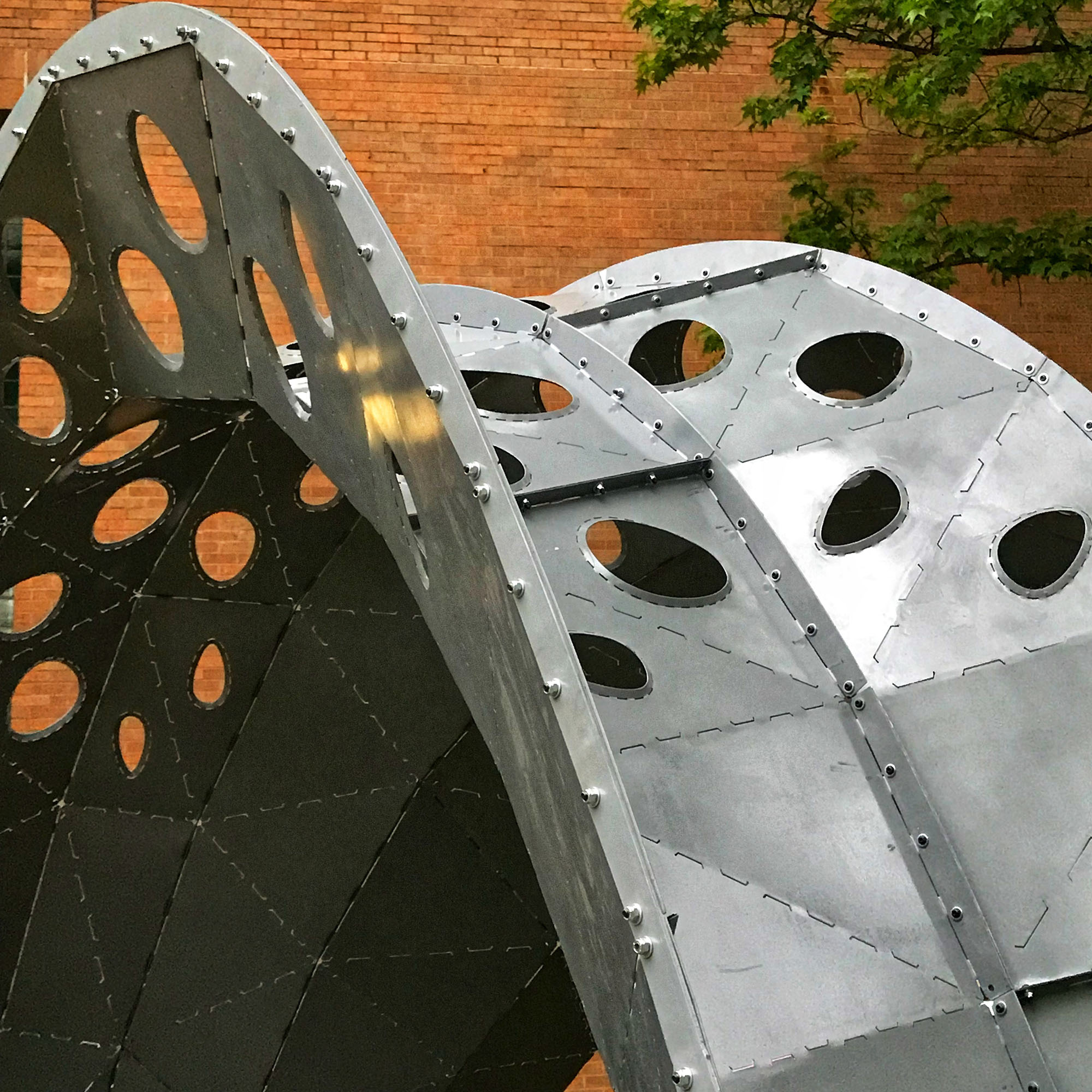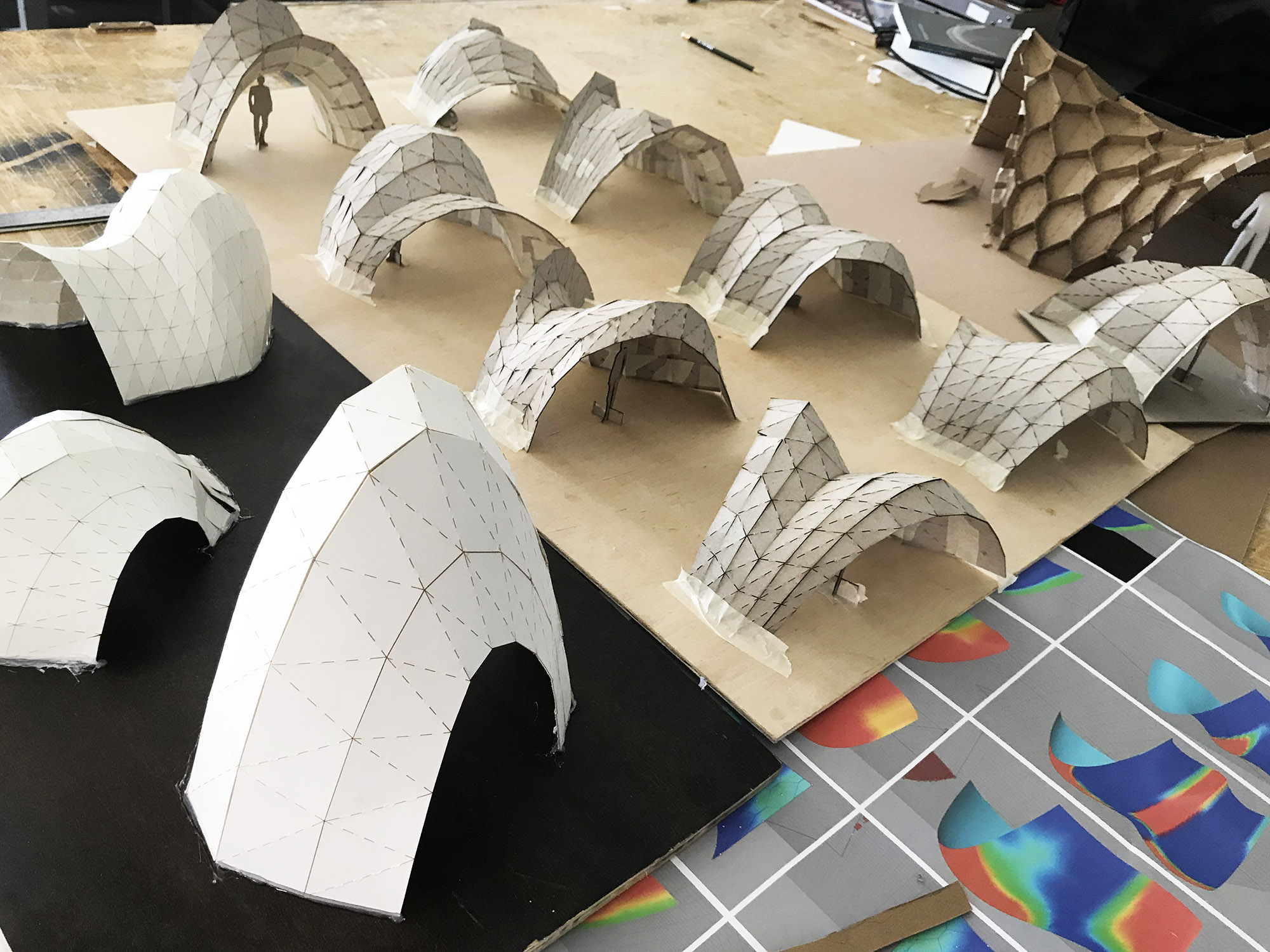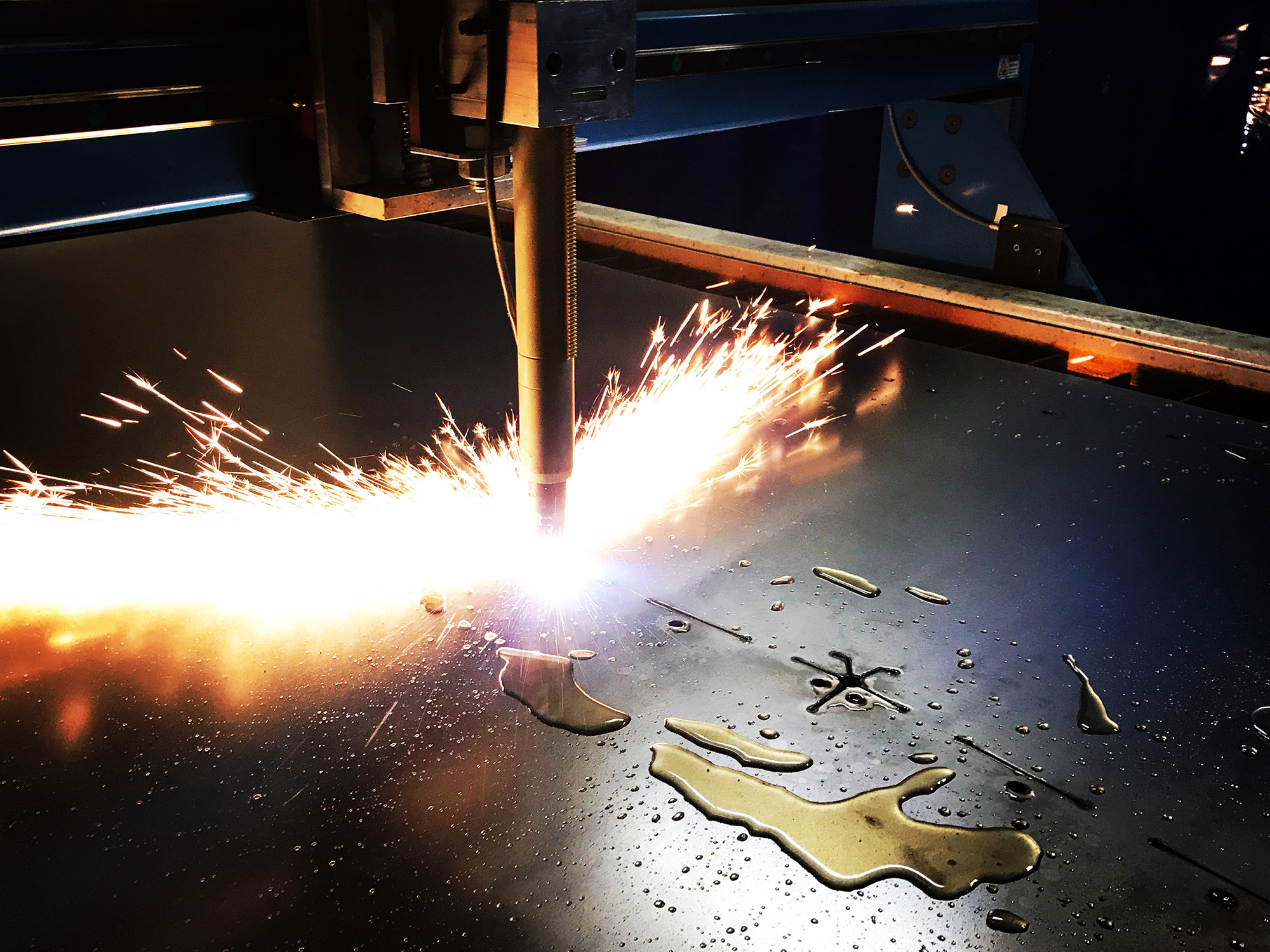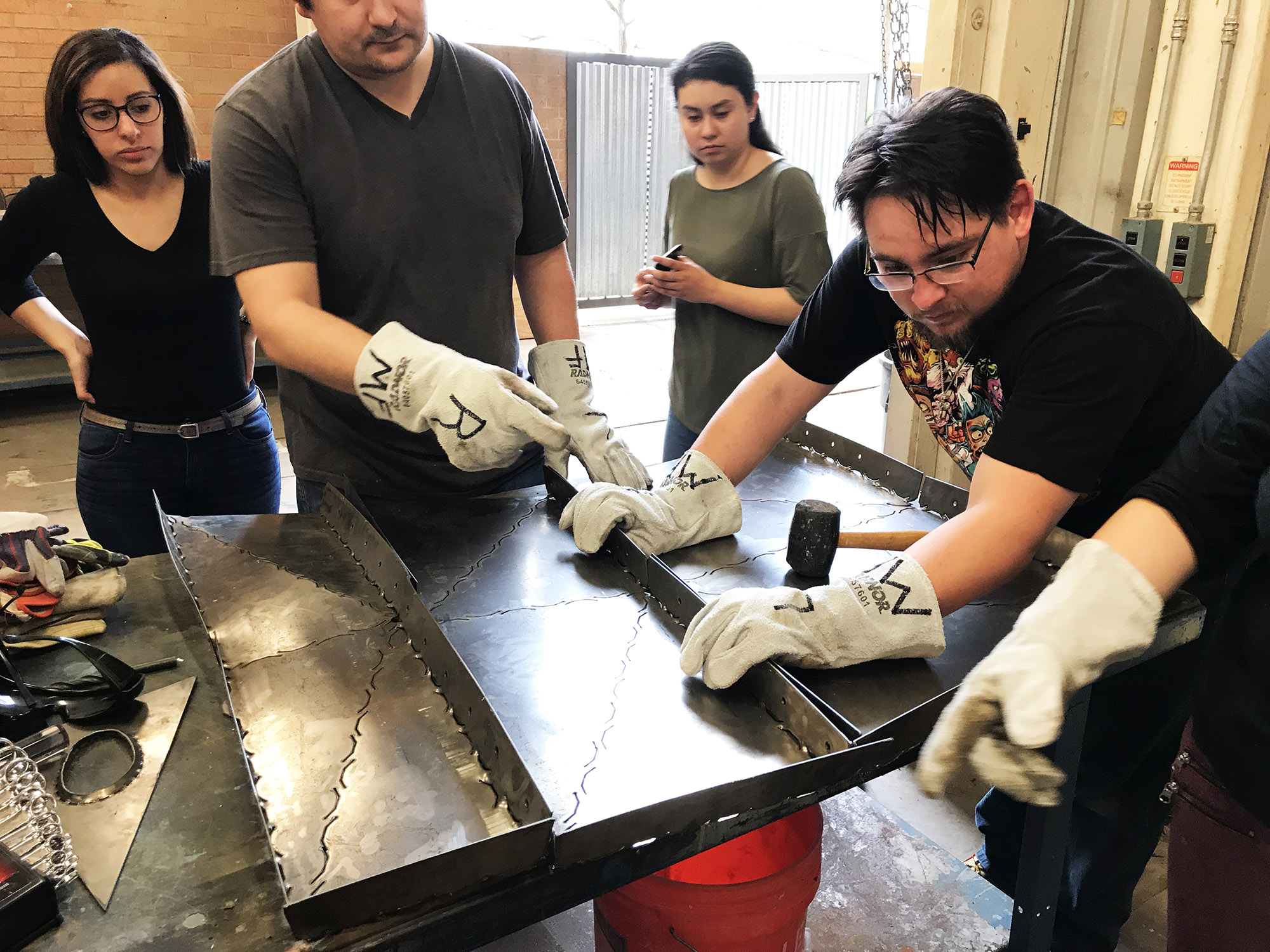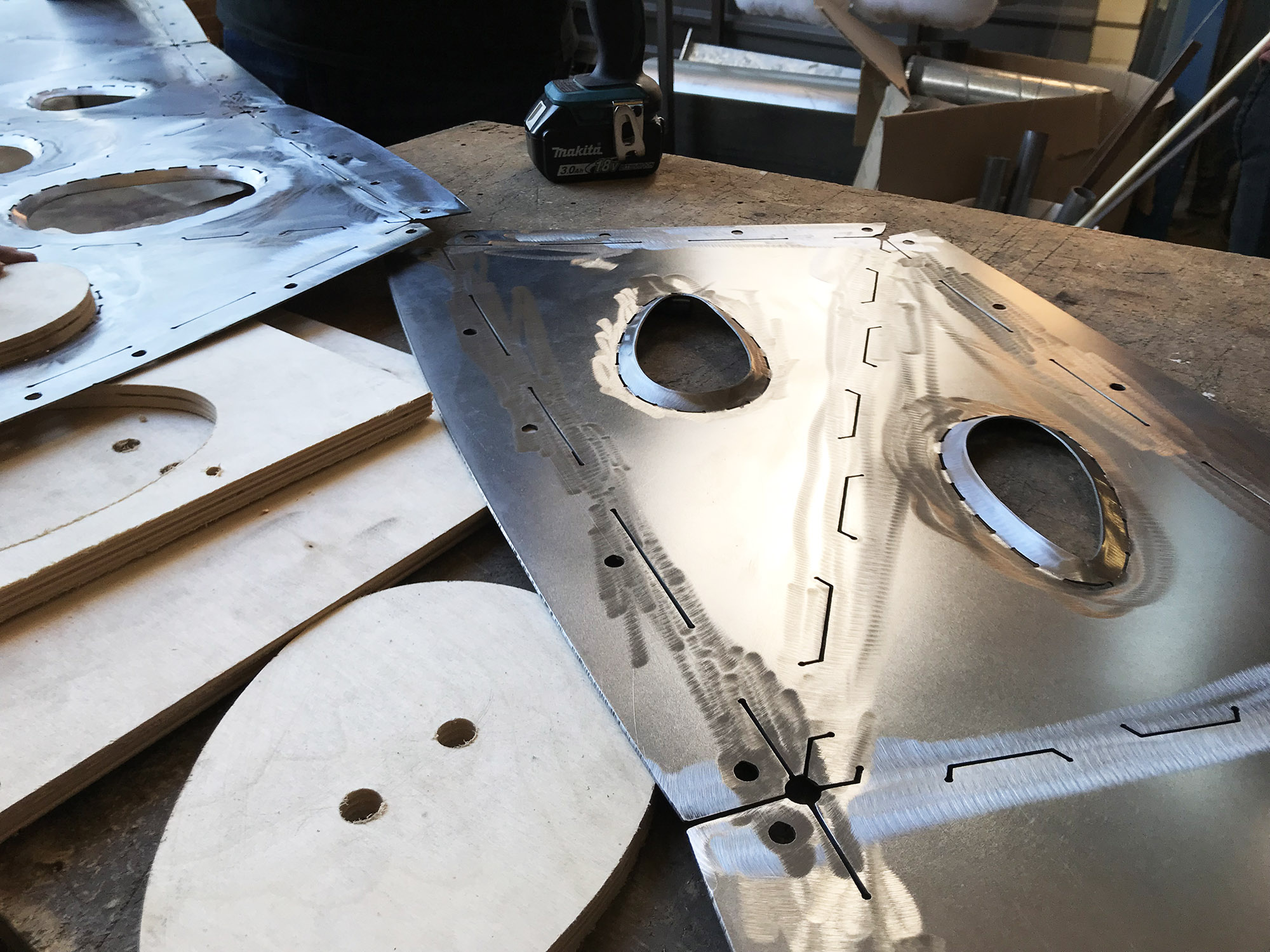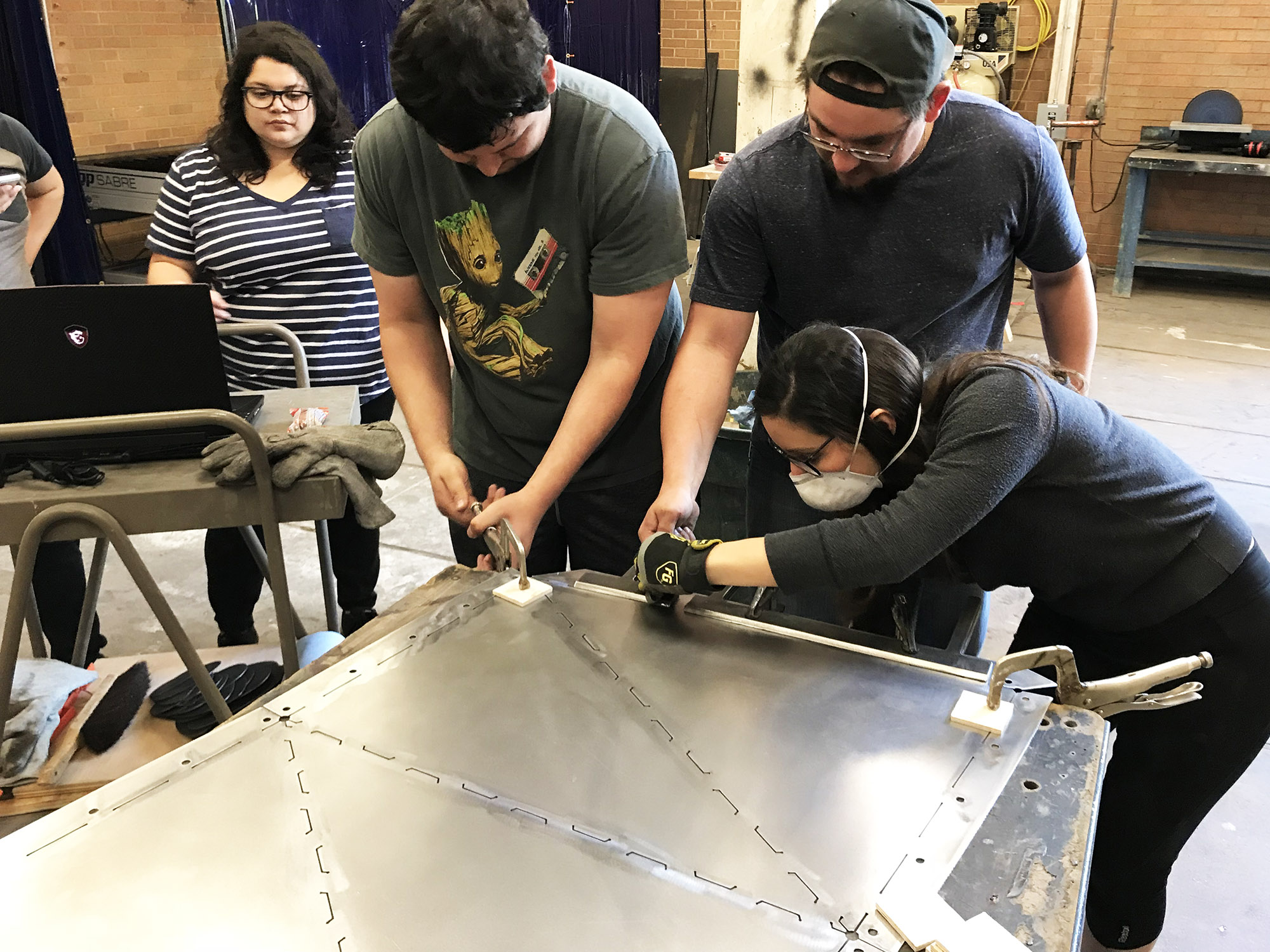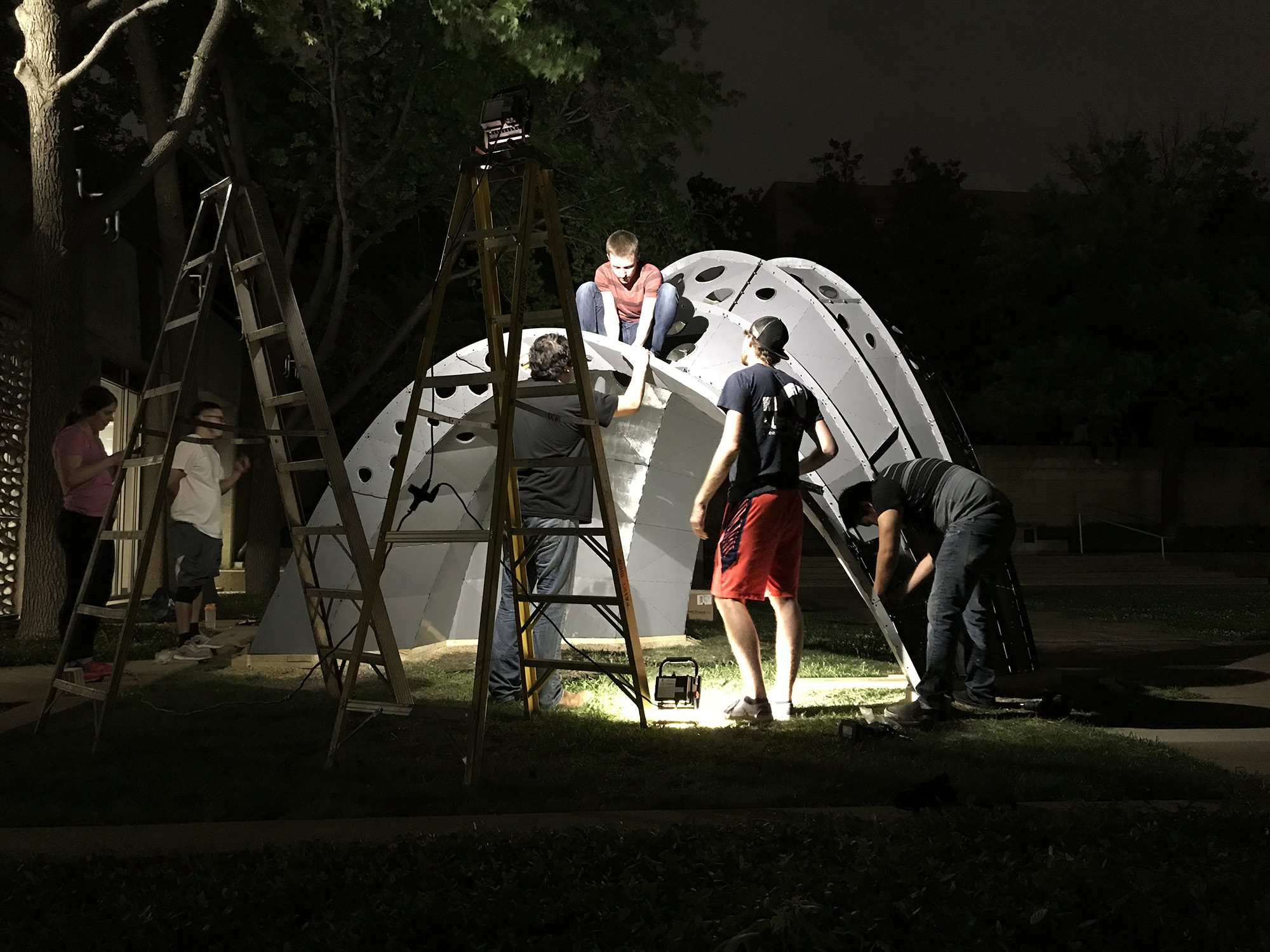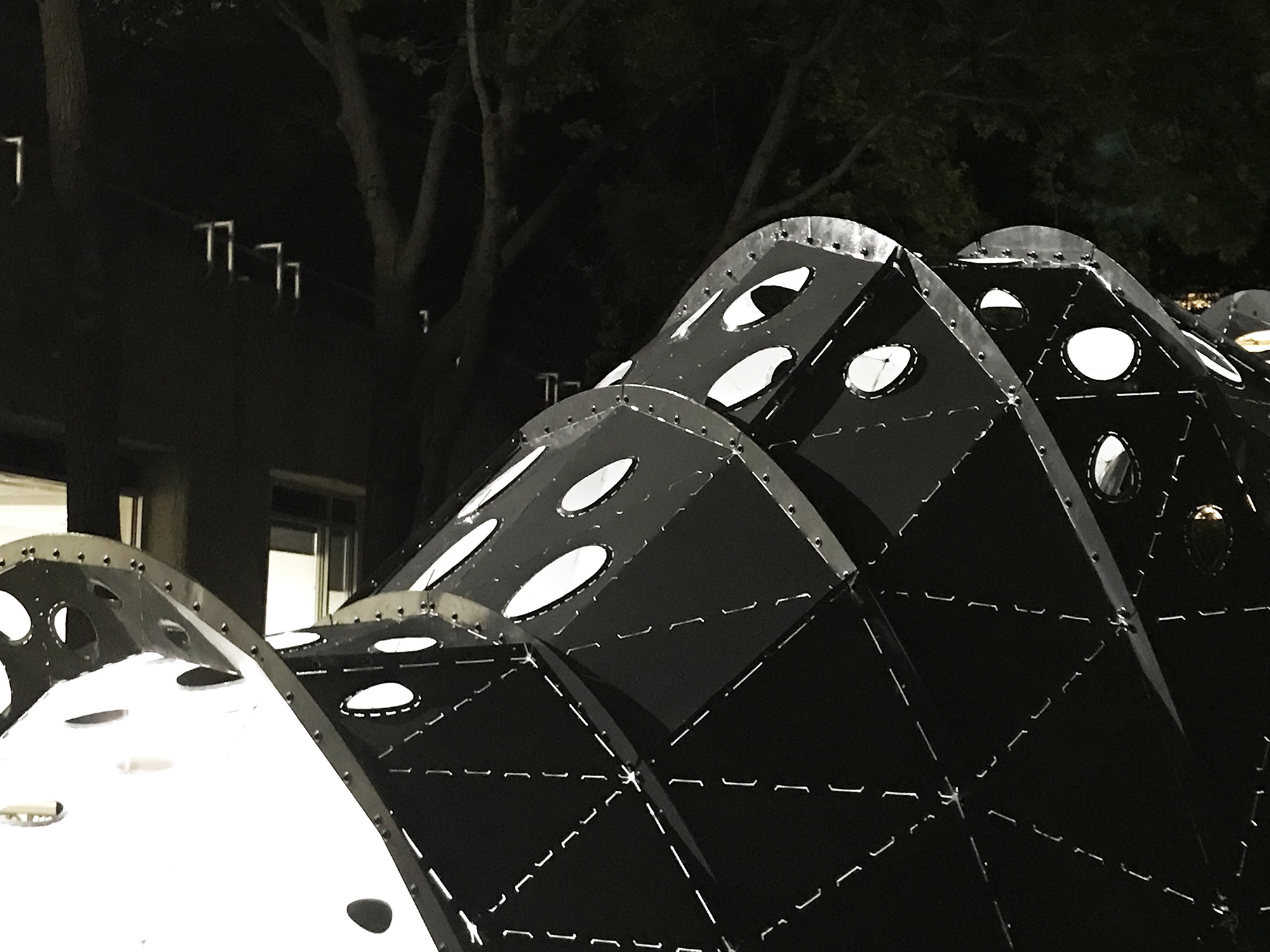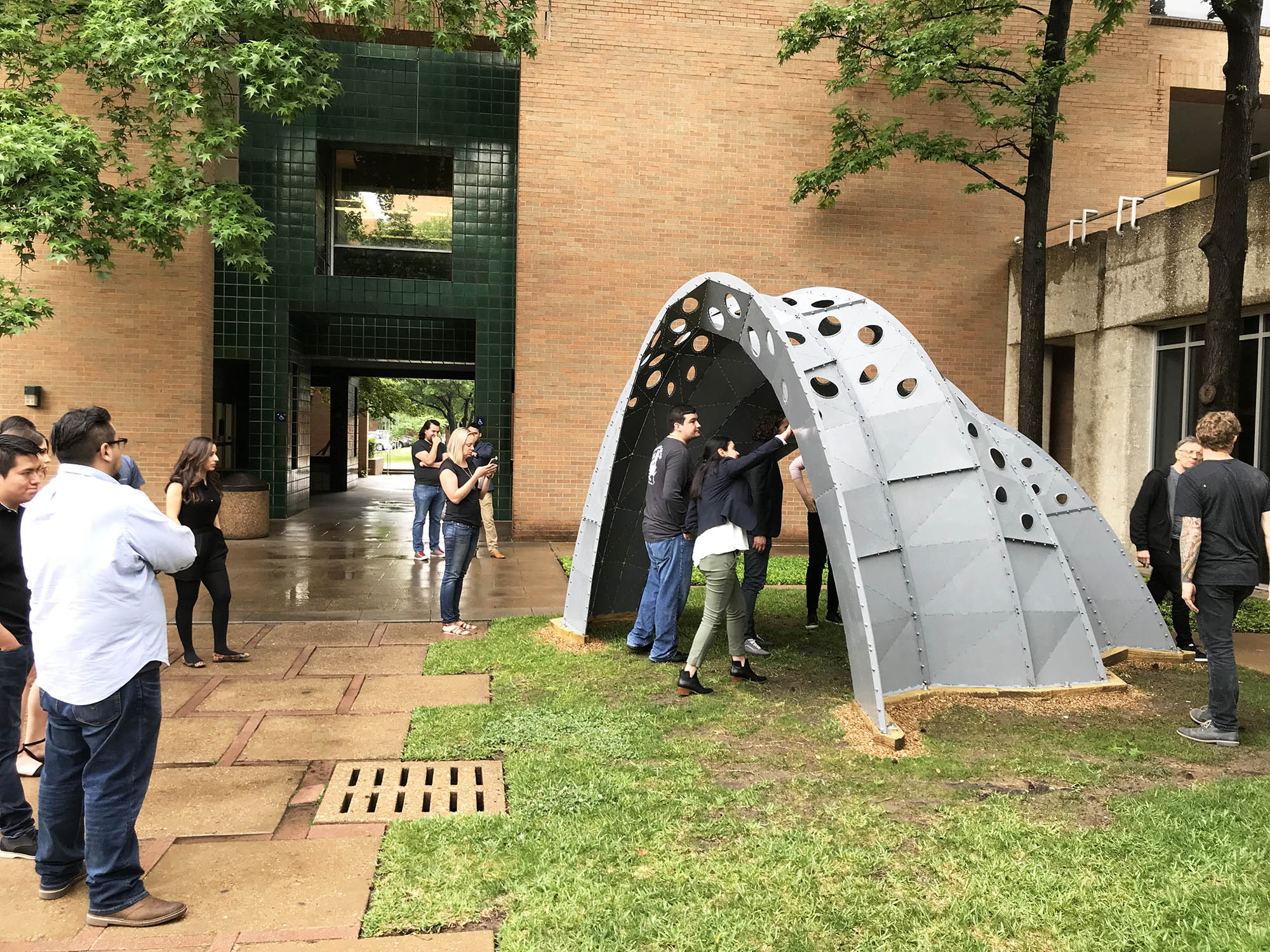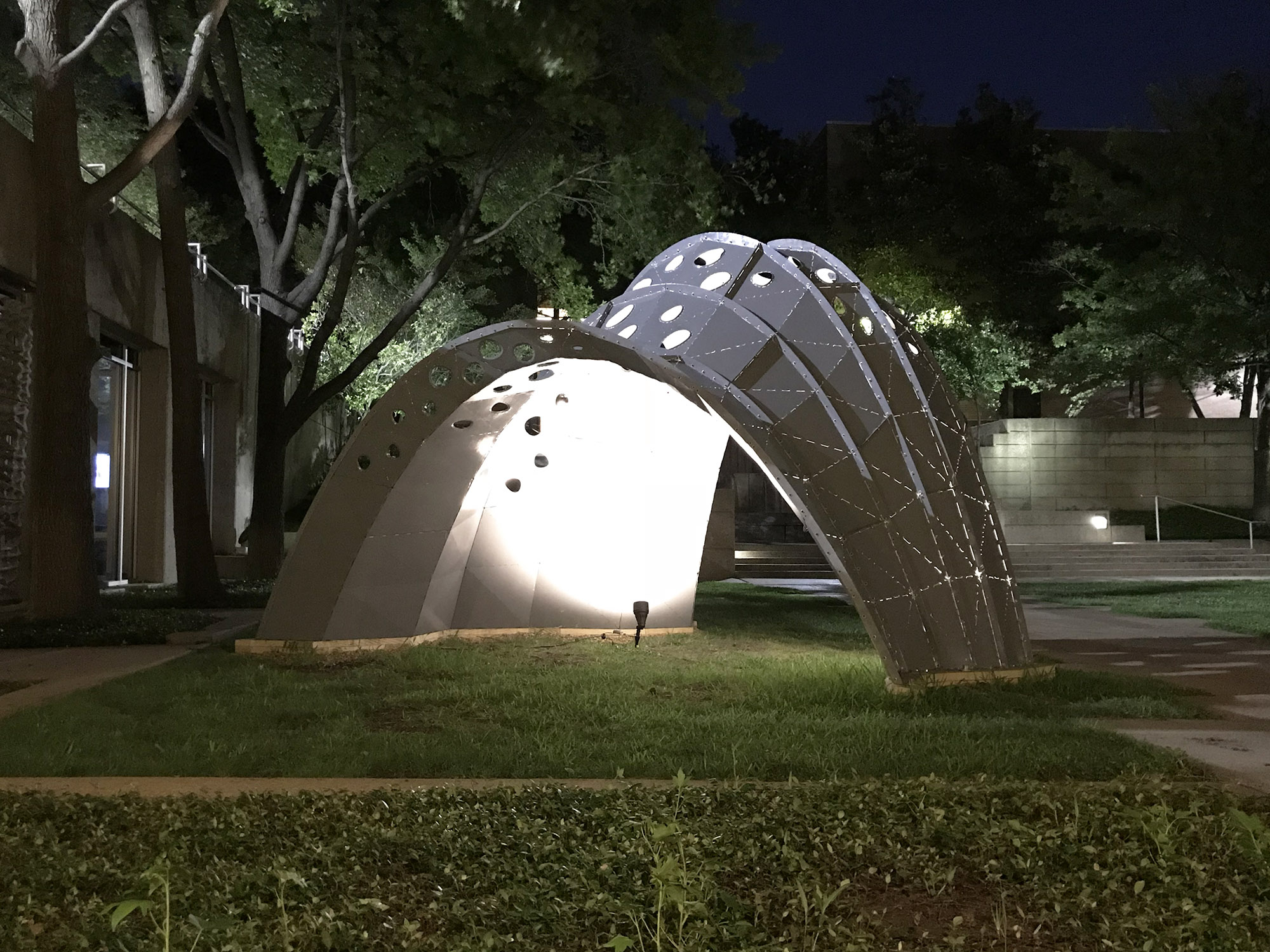CAPPA canopy
(PROJECT WITH STUDENTS)
Course: Advanced Design Studio
University of Texas at Arlington
Spring, 2018
16 gauge cold rolled steel sheet
Rhino3d
Grasshopper
Kangaroo for Grasshopper
Karamba
RhinoCAM
(Scroll down for image gallery)
This thin-gauge steel arch structure was designed using a computational form-finding method. This was a class project for a course that I taught focusing on shell structures. The design process used structural analysis software to simulate forces acting against an elastic material. The shapes that resulted from exaggerating the deflection of the material then became the form of the shell.
Shell structures are materially efficient due to their complex three-dimensional surfaces, in the way that an egg develops strength through its geometry. They are inherently efficient in their use of materials, as they transmit all structural loads through their thin surfaces and require no underlying framework.
Construction of this class of structure is difficult because these surfaces have double-curvature (concave, convex, or saddle-shaped), which are geometries that are difficult to realize with standardized building materials. This research project focused on methods of constructing complexly curved shells from flat two-dimensional patterns.
Students generated an iterative series of shell forms, each of which was structurally analyzed. A final design was chosen and the surface subdivided into flat, triangular panels. When joined at their edges, these flat components assume a functionally close approximation of the desired three-dimensional form. Where the structural analysis revealed less stress in a panel, a perforation was added to remove material weight. These panels were then cut on a CNC plasma cutter, manually folded and creased to the required joint angles, and assembled.
